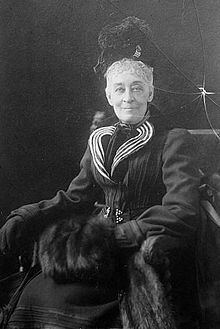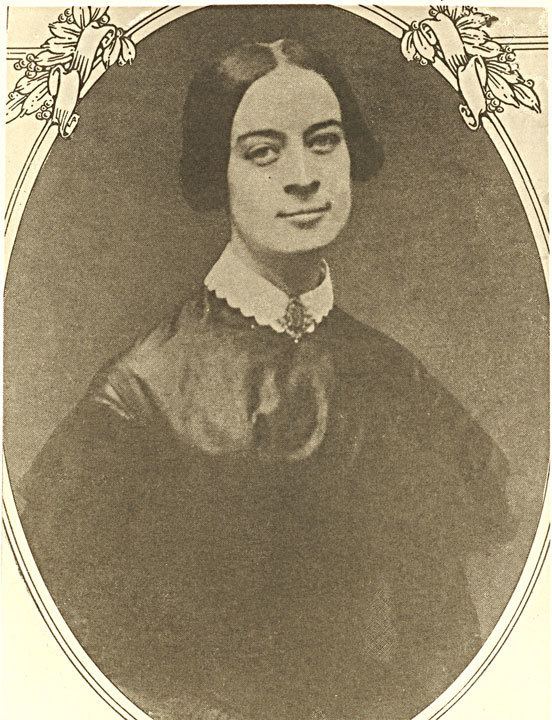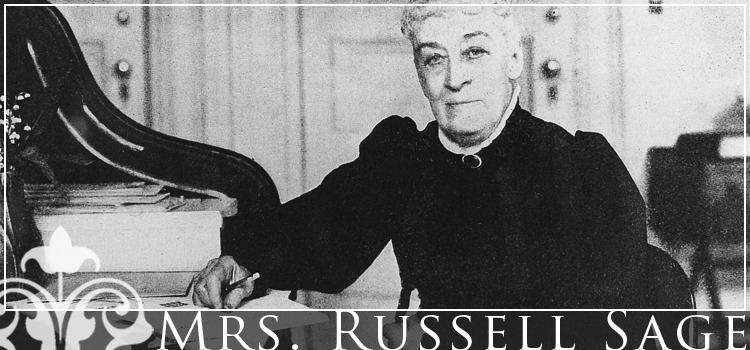Name Margaret Slocum | ||
 | ||
Organizations founded Russell Sage Foundation, Russell Sage College | ||
Forest Hills Gardens by Anna Pinto Realty!
Margaret Olivia Slocum Sage, known as Olivia Sage (8 September 1828-4 November 1918), was an American philanthropist known for her contributions to education and progressive causes. In 1869 she married the robber baron Russell Sage as his second wife. At his death in 1906, she inherited a fortune estimated at more than $63,000,000, to be used at her discretion.
Contents
- Forest Hills Gardens by Anna Pinto Realty
- Early life and education
- Career
- Marriage and family
- Philanthropy
- References

A former teacher, Sage strongly supported education, both with program and building grants to Syracuse and other universities. She established the Russell Sage Foundation in 1907 and founded Russell Sage College in 1916, as well as endowing programs for women.

Early life and education

Margaret Olivia Slocum, called Olivia, was born in Syracuse, New York, to Margaret (Pierson) and Joseph Slocum. After the Panic of 1837 and the decline of canal traffic with the construction of railroads, his businesses and warehouses began to fail. Olivia's early life was haunted by her father's financial struggles, but she was educated in private schools and graduated from the Troy Female Seminary (later called the Emma Willard School) in 1847.
Career

Olivia Slocum supported herself by teaching for 20 years in Syracuse, New York, where she lived with her parents, and Philadelphia. Her father continued to struggle and in 1857, fatally ill with tuberculosis, sold their family home in Syracuse. Olivia and her mother had to move in with relatives.

During the Civil War, Olivia Slocum moved to Philadelphia, where she worked as a governess for a wealthy family. She also volunteered in a military hospital.
Marriage and family

In 1869 at age 41, Olivia Slocum married Russell Sage, a widower, financier and robber baron who was 12 years older than she. They had no children. She became involved in activities in which her role as his wife defined her. In 1906 Sage died and left his entire fortune of about $70 million to Olivia.
Philanthropy

Her philosophy was encapsulated in her article, "Opportunities and Responsibilities of Leisured Women", including "helping the unfortunate by providing them with a good environment, opportunity for self-support and individual responsibility, and protection from the unscrupulous." Mrs. Sage donated Constitution Island to the federal government as an addition to West Point.
In 1905, Olivia Sage told Syracuse University that she would purchase Yates Castle and its surrounding property to house a teachers' college. This independent project demonstrated her attachment to Syracuse, her self-identification as a teacher, and her commitment to women's education.
Sage became a patron of E. Lilian Todd (the first woman in the world to design airplanes) after seeing Todd's first airplane design at an exhibition at Madison Square Gardens in 1906.
Her greatest single gift was $10,000,000 in 1907 to establish the Russell Sage Foundation, which continues to study social issues and recommend solutions. In 1908 she donated $650,000 to Yale University, enabling the purchase of the Hillhouse property for the university's Science Hill. In 1909, she donated Holder Hall to Princeton University, named after her Quaker ancestor Christopher Holder, persecuted for his religion in colonial Massachusetts.
Two years later, Sage gave $300,000 to Cornell University for the construction of a women's dormitory, Risley Hall, named after her mother-in-law. Her promotion of women's education also included funding the construction of the Olivia Josselyn House, named for her grandmother, at the then all-female Vassar College in 1912. That year she also acquired Marsh Island in the Gulf of Mexico and dedicated it as a refuge for birds and other wildlife.
In 1916, Sage founded Russell Sage College in Troy, New York. Later, in 1919 she gave $2,750,000 for the development of the Russell Sage Foundation Homes, a suburban community at Forest Hills Gardens, Queens. In addition she gave extensively to the Rensselaer Polytechnic Institute (RPI) and the Emma Willard School, both in Troy. These contributions included funds donated by Sage that later led to major improvements on Rensselaer Polytechnic Institute's campus including the founding of the Russell Sage Dining Hall in 1916, named after Sage's nephew who graduated in 1859, and $1,000,000 for the creation of Russell Sage Laboratory - home, at the time, to Rensselaer's Department of Electrical and Mechanical Engineering. She also contributed to the National Training School in Durham, North Carolina, founded by James E. Shepard for black teachers. Up to 1915, the sum total of Sage's gifts surpassed $23,000,000.
Olivia Sage also organized the effort to fund and build the John Jermain Memorial Library in Sag Harbor. It was named in honor of her grandfather Major John Jermain, who fought in the American Revolution. Designed by Augustus N. Allen, the library was presented in 1910 as a gift to the people of Sag Harbor. The property was bought at a cost of $10,000, and was directly across from Sage's then summer home on Main Street.
Sage founded Russell Sage College as a comprehensive college for women. It is located within the historic district of Troy, New York. RSC offers liberal arts and professional degree programs to empower students to become women of influence in their careers and their communities.
Olivia Sage's residence for many years at Sag Harbor was later adapted for use as the town's Sag Harbor Whaling Museum.
The historian Ruth Crocker has studied how Sage provided in her will for distribution of more wealth: her legacy had fifty-two equal parts. Nineteen named educational institutions received one part, or about $800,000 each. She made larger bequests to the following of $1.6 million each: the Emma Willard School, the Woman's Hospital, the Children's Aid Society, the Charity Organization Society, the Metropolitan Museum of Art, the American Museum of Natural History, and Syracuse University. She also provided large donations in her will to a variety of churches, missions, and other religious causes.
